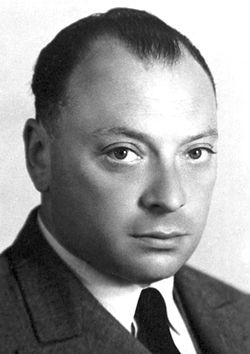Pauli effect
The Pauli effect is a term referring to the apparently mysterious ‘anecdotal’ failure of technical equipment in the presence of certain people. The term was coined using the name of the Austrian theoretical physicist Wolfgang Pauli. The Pauli effect is not to be confused with the Pauli exclusion principle, which is a bona fide physical phenomenon.

Since the 20th century, the work of physics research has been divided between theorists and experimentalists (see scientific method). Only a few physicists, such as Enrico Fermi, have been successful in both roles. Lacking an aptitude or interest in experimental work, many theorists have earned a reputation for accidentally breaking experimental equipment. Pauli was exceptional in this regard: it was said that he was such a good theorist that any experiments would self-destruct simply because he was in the vicinity. For fear of the Pauli effect, the experimental physicist Otto Stern banned Pauli from his laboratory in Hamburg despite their friendship.
An incident occurred in the physics laboratory at the University of Göttingen. An expensive measuring device, for no apparent reason, suddenly stopped working, although Pauli was in fact absent. James Franck, the director of the institute reported the incident to his colleague Pauli in Zürich with the humorous remark that at least this time Pauli was innocent. However, it turned out that Pauli on a railway journey to Copenhagen switched trains in Göttingen rail station about the time of failure. The incident is reported in George Gamow’s book, Thirty Years That Shook Physics, where it is also claimed the more talented the theoretical physicist, the stronger the effect.
The Pauli effect, if it were real, would be classified as a “macro-psychokinetic” phenomenon. Pauli was convinced that the effect named after him was real. As Pauli considered parapsychology worthy of serious investigation, this would fit with his thinking; to this end, Pauli corresponded with Hans Bender and Carl Jung on the concept of Synchronicity. In 1934, Pauli saw a failure of his car during a honeymoon tour with his second wife as proof of a real Pauli effect since it occurred without an obvious external cause.
In February 1950, when he was at Princeton University, the cyclotron burnt, and he asked himself if this mischief belonged to such a Pauli effect, named after him.
The Pauli effect at the foundation of the C.G. Jung Institute, Zürich 1948, caused Pauli to write his article “Background-Physics“, in which he tries to find complementary relationships between physics and depth psychology.
See also: